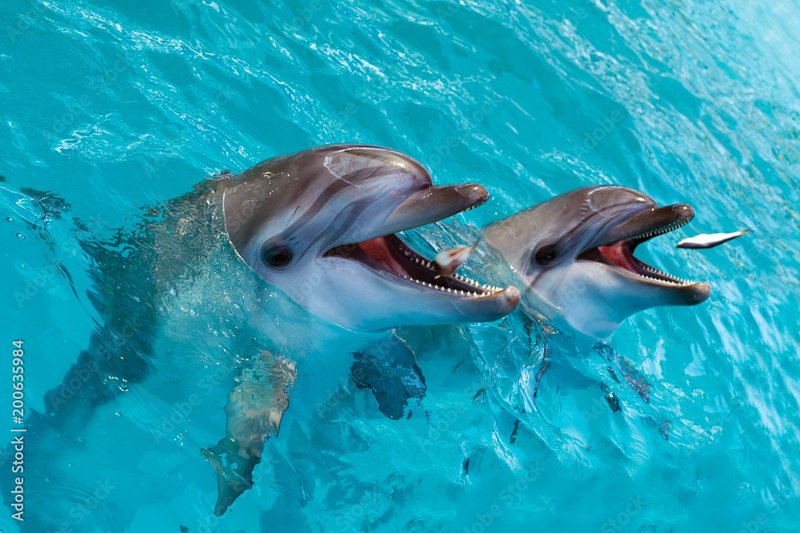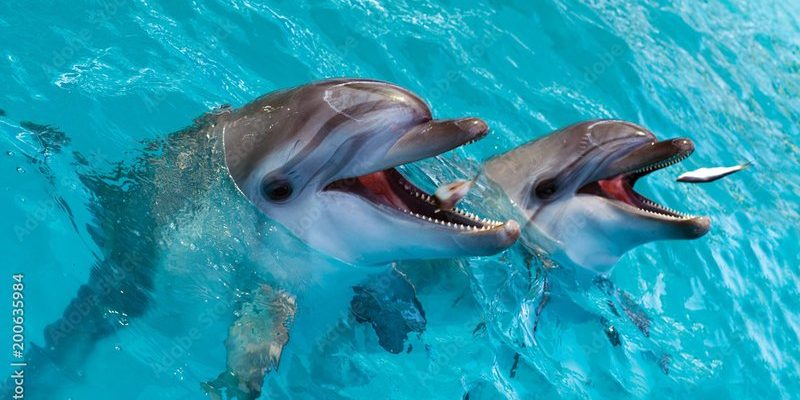
Bottlenose dolphins are often seen in warm coastal waters, showcasing their acrobatic skills and social behaviors. They’re not just cute performers; they have a complex feeding routine that reflects their adaptability and intelligence. Imagine a gourmet chef, carefully selecting the freshest ingredients for a dish—this is how dolphins approach their meals, using their skills and senses to hunt effectively. So, let’s unpack what makes up their diet and how they feed in the wild!
Understanding the Bottlenose Dolphin’s Diet
Bottlenose dolphins are opportunistic feeders, which means they eat a wide variety of prey. Their diet typically includes fish, squid, and crustaceans. However, what exactly do they munch on daily?
– Fish: A significant part of their diet consists of different species of fish, such as mullet, herring, and mackerel. They are skilled hunters and can even collaborate in groups to herd schools of fish, creating a sort of “dinner party” in the ocean.
– Squid: These elusive cephalopods also make their way onto the dolphin’s menu. Bottlenose dolphins are known for their agility, which helps them catch squid with ease, even in deeper waters.
– Crustaceans: While not as common as fish or squid, crustaceans like shrimp and crabs can also be part of their diet. Dolphins often adjust their eating habits based on what is available in their environment.
You might be wondering, why the variety? Well, this adaptability ensures they can thrive in different habitats and during varying seasons.
Feeding Techniques: How Bottlenose Dolphins Hunt
The way bottlenose dolphins hunt is nothing short of fascinating. Without hands or tools, they rely on their intelligence and teamwork to catch their meals. Here are a few of their impressive techniques:
– Echolocation: Just like sonar technology, dolphins use echolocation to locate prey. They send out sound waves, which bounce off objects and return to them, allowing them to “see” in murky waters.
– Cooperative Hunting: These dolphins often work together to hunt. They create a net of bubbles or surround schools of fish, driving them toward shallow water, making it easier to catch them. It’s like a dance—a coordinated effort that showcases their social skills.
– Stranding: In some cases, dolphins engage in a behavior called stranding. They deliberately beach themselves temporarily to catch fish in shallow waters. Don’t worry; they know how to make it back to the water!
This combination of techniques shows just how resourceful and intelligent bottlenose dolphins are. Feeding is not just about survival for them; it’s also a complex social activity.
Feeding Behavior in Different Environments
Where bottlenose dolphins live affects their feeding habits. You might be surprised by how adaptable they are to various environments. Let’s look at a couple of key areas:
– Coastal Waters: In these areas, you’ll often find dolphins feeding near river mouths or estuaries. The nutrient-rich water attracts a wide variety of fish, making it an ideal dining spot. Dolphins also enjoy foraging in these areas during low tide, taking advantage of the abundance of food.
– Open Ocean: In deeper waters, dolphins tend to feed on squid and fish that are more abundant in the open sea. This requires different hunting strategies, such as diving deeper to catch fast-moving prey. They often travel great distances to find the best feeding grounds.
The flexibility in their feeding behavior is a testament to their intelligence. They can thrive in many different habitats throughout their life.
Social Structures and Feeding
Believe it or not, a dolphin’s social structure can influence its feeding habits! Bottlenose dolphins are highly social animals, living in groups called pods. Here’s how their social life affects their diet:
– Shared Knowledge: Younger dolphins learn from older pod members. This sharing of knowledge ensures that younger dolphins can refine their hunting skills. You could see a mother dolphin teaching her calf the best spots to find fish, much like a parent teaching their child how to cook.
– Hierarchical Behavior: With established social hierarchies, dominant dolphins often have first access to food. This social dynamic can lead to competition but also ensures that younger and weaker members learn effective hunting tactics over time.
– Group Feeding: When hunting in pods, dolphins are more effective. They can drive fish into tight groups, making it easier to catch them. Watching this teamwork unfold is like witnessing a well-coordinated team effort, each member playing a vital role.
Thus, the social nature of bottlenose dolphins adds another layer of complexity to their feeding habits.
Impact of Human Activity on Dolphin Diet
Sadly, human activities can impact bottlenose dolphins and their food sources. Pollution, fishing practices, and climate change pose threats to their diet. Here’s how:
– Pollution: Chemicals and plastics can contaminate their food supply, making it dangerous for dolphins to feed in certain areas. Consuming polluted fish can lead to health issues for these animals.
– Overfishing: The depletion of fish stocks due to commercial fishing affects the availability of food for dolphins. When their primary food sources dwindle, it can lead to malnutrition or starvation.
– Habitat Destruction: Coastal development and pollution can destroy crucial habitats where dolphins feed. Without healthy environments, their ability to find food declines.
It’s essential for us to understand how our actions affect these magnificent creatures. Protecting their habitats not only safeguards them but also ensures the health of our oceans.
In short, the diet and feeding habits of bottlenose dolphins are a captivating blend of adaptability, intelligence, and social interaction. These marine mammals thrive on a diverse diet made up of fish, squid, and crustaceans, using sophisticated hunting techniques to catch their meals. As we learn more about their feeding behaviors and the various factors impacting their diet, we gain a greater appreciation for their role in our oceans.
By protecting their environments and food sources, we can help ensure that bottlenose dolphins continue to thrive for generations to come. After all, these friendly creatures are not just entertainers; they are essential players in the marine ecosystem, reminding us of the delicate balance of nature. Let’s work together to keep our oceans healthy and vibrant for everyone, dolphins included!

